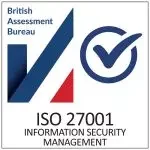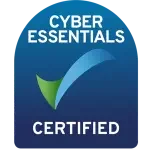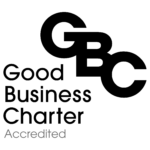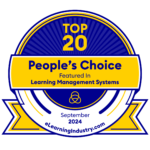
Ensuring that employees not only acquire knowledge but also effectively apply it is crucial. This article looks at tracking knowledge transfer, offering insights into the intricacies of assessing skills application in your workforce. Discover practical strategies to optimize your training initiatives and maximize employee performance.
IN THIS ARTICLE...
Understanding the Importance of Knowledge Transfer
Effective training programs are the cornerstone of organizational success, but their impact hinges on more than just the dissemination of information. It’s essential to evaluate how well employees retain and effectively apply acquired knowledge, a process commonly referred to as knowledge transfer.
“Organizations whose units learn from one another’s experience are more productive, competitive, and more likely to survive than their counterparts less adept at knowledge transfer.”
Linda Argote – Organizational Learning: Creating, Retaining and Transferring Knowledge
Knowledge transfer encompasses the seamless transition of learning from training environments to practical application in the workplace, driving tangible results and organizational growth. By tracking skills application, organizations can gauge the effectiveness of their training efforts, identify areas for improvement, and align learning initiatives with strategic objectives.
Assessing Retention: The Key to Long-Term Success
Retention of knowledge is a critical measure of training effectiveness. Without retention, even the most comprehensive training programs fall short of delivering lasting impact. By identifying retention gaps early on, companies can tailor reinforcement activities and targeted interventions to solidify learning outcomes.
While evaluating knowledge retention provides insights into learning outcomes, focusing on skills application delves deeper into how effectively employees can apply acquired knowledge in real-world scenarios. This shift in focus empowers employees to not only retain information but also leverage it to drive meaningful contributions to their roles and the overall success of the organization.
Knowledge Transfer: Unlocking Employee Potential
Assessing knowledge transfer involves evaluating how effectively employees apply acquired knowledge and skills in their day-to-day roles, bridging the gap between training and application.
By implementing robust assessment mechanisms, organizations can gauge the extent to which learning outcomes are integrated into job performance, empowering employees to maximize their potential and contribute to organizational success. From performance evaluations to skills assessments, employing a multifaceted approach enables comprehensive insights.
Bridging the Gap between Training and Application
While retention is vital, the true value lies in the ability of employees to transfer learned skills to real-world scenarios. Tracking the transfer of knowledge involves evaluating how effectively employees apply acquired knowledge and skills in their day-to-day roles.
Observing performance metrics, conducting skills assessments, and soliciting feedback from supervisors and peers provide valuable insights into the application of learning in the workplace. This data enables organizations to refine training content, delivery methods, and support mechanisms to enhance transferability and drive business impact.
For SMEs/Early Stage Companies:
- Take an agile approach by starting with spreadsheet or survey-based assessments. Leverage free online tools before building out extensive technology infrastructure.
- Phase in tracking through incremental competency development focused on the most critical roles and workflows.
- Survey managers once a quarter about observed skills application rather than formal performance management tracking.
- Sample 3-5 employees per training program with short interviews on applied skills rather than comprehensive evaluations.
For Large Enterprises:
- Build out enterprise-grade learning management platforms integrated with your existing HRIS and talent development systems to enable scalable automated tracking.
- Develop role-specific competency models across business units to cover the breadth of job functions and training needs.
- Require managers to formally link applied skills acquisition to performance management and advancement criteria during annual review cycles.
- Devote resources to internal learning & development staff focused solely on curriculum design, delivery, and effect measurement.
Effective Tracking Mechanisms for Knowledge Transfer
Establish robust tracking mechanisms tailored to your organization’s unique needs and objectives to master the assessment of knowledge transfer. Leveraging learning management systems (LMS), performance management tools, and data analytics facilitates automated tracking of training participation, skill proficiency, and on-the-job performance.
By harnessing technology-driven insights, organizations gain actionable data to optimize training strategies, identify areas for improvement, and drive continuous learning and development initiatives.
Tools & Strategies for Tracking Knowledge Transfer
Effective tracking mechanisms for skills application encompass a range of tools and strategies designed to monitor and evaluate how well employees apply newly acquired skills and knowledge in their roles.
Here are some examples:
- Learning Management Systems (LMS): LMS platforms provide a centralized hub for managing and tracking employee training activities. By recording participation, completion rates, and assessment scores, LMS systems offer valuable insights into individual and group learning progress.
- Performance Management Tools: Integrating specific metrics into performance management systems allows organizations to assess employee proficiency and competency levels over time. By aligning learning objectives with performance goals, organizations can identify areas for improvement and provide targeted support to employees.
- Skills Assessments and Competency Frameworks: Implement skills assessments and competency frameworks to evaluate employee proficiency in areas relevant to their roles. Define clear benchmarks and metrics aligned to competencies. By defining clear competency criteria and assessing skill levels against predefined benchmarks, organizations can track the transfer of knowledge and identify skill gaps that require attention.
- Job Performance Reviews and Feedback: Regular performance reviews and feedback sessions provide opportunities for managers and employees to discuss progress, challenges, and development needs. By incorporating discussions on knowledge application and skill usage, organizations can gain valuable insights into training effectiveness and identify opportunities for improvement.
- Data Analytics and Reporting: Leveraging data analytics tools and reporting capabilities allows organizations to analyze trends, patterns, and correlations related to employee performance. By generating actionable insights from data, organizations can make informed decisions about training strategies, resource allocation, and performance improvement initiatives.
- Peer-to-Peer Learning and Knowledge-Sharing Platforms: Facilitating peer-to-peer learning and knowledge-sharing initiatives encourages collaboration and the exchange of best practices among employees. By providing platforms for employees to share insights, experiences, and lessons learned, organizations can foster a culture of continuous learning and sharing knowledge across teams and departments.
By leveraging a combination of these tracking mechanisms, organizations can effectively monitor and evaluate knowledge transfer efforts, identify areas for improvement, and drive continuous learning and development initiatives to enhance employee performance and organizational success.
Example Competency Framework to Assess Knowledge Transfer
The Legal Technology Core Competencies Certification Coalition (LTC4) has established a set of technology workflow standards that legal organizations can leverage for skills training and assessment.
For example, LTC4 outlines core skills for effectively applying document productivity software. This includes competencies like:
- Automating formatting using styles and templates
- Recording macros to expedite document preparation
- Applying advanced software features to enhance efficiency
Assess these competencies by:
- Testing lawyers’ knowledge of key software capabilities
- Observing the direct use of advanced features in daily workflows
- Evaluating independently configured templates, macros, and automation
By leveraging this type of clearly defined technology competency model, legal organizations can precisely benchmark employee skills, identify specific gaps, tailor training initiatives, and evaluate knowledge into practical application.
The LTC4 gives the legal industry an impactful framework for ensuring technology workflows and skills drive productivity – one that can be adapted to assess employee readiness levels across critical systems and tools.
Success with Effective Knowledge Transfer Assessment
The ability to track skills application is indispensable for driving organizational success. By prioritizing the assessment of knowledge retention and transfer, companies can ensure that their training initiatives yield tangible results and empower employees to thrive in their roles.
Embrace proactive tracking mechanisms, leverage data-driven insights, and continuously refine your training strategies to unlock the full potential of your workforce.
Takeaways & Next Steps
Key takeaways for implementing effective knowledge transfer assessment include:
- Leverage competency models like LTC4 to establish clear benchmarks for skills assessment. Align training programs to competencies with measurable proficiency levels.
- Use multifaceted tracking strategies combining methods like LMS data, performance reviews, and competency testing. Holistic monitoring provides comprehensive insights.
- Focus training initiatives on real-world application by continually evaluating on-the-job utilization of skills after training programs. This bridges the gap between knowledge building and practical integration.
- Tailor knowledge transfer assessment and training reinforcement to role-specific skills that drive productivity and performance in day-to-day workflows.
- Use data and competency assessments to identify specific skill gaps needing development rather than taking a one-size-fits-all training approach across the organization.
Key next steps for driving successful initiatives include:
- Audit existing training programs and assessment strategies against industry competency models to identify gaps.
- Map out plans for bolstering skills application tracking mechanisms with technology tools and defined competency frameworks.
- Establish regular review cadences to re-evaluate training alignment to ever-evolving workforce needs and organizational objectives.
Formalizing your knowledge transfer tracking and assessments takes work, but pays dividends. Take these foundational steps to propel your workforce performance into industry-leading territory. Your people and organization will reap the benefits as skills application unlocks new levels of productivity and innovation.
Intellek (formerly TutorPro) is a founding member of the learning technology industry. With a presence in the USA, UK, Canada, and the EU – for over 30 years we have pioneered the development of cutting-edge eLearning software and online training solutions, with a large and diverse portfolio of international clientele.
Disclaimer: We use all the tools available including generative AI to create relevant and engaging content.





